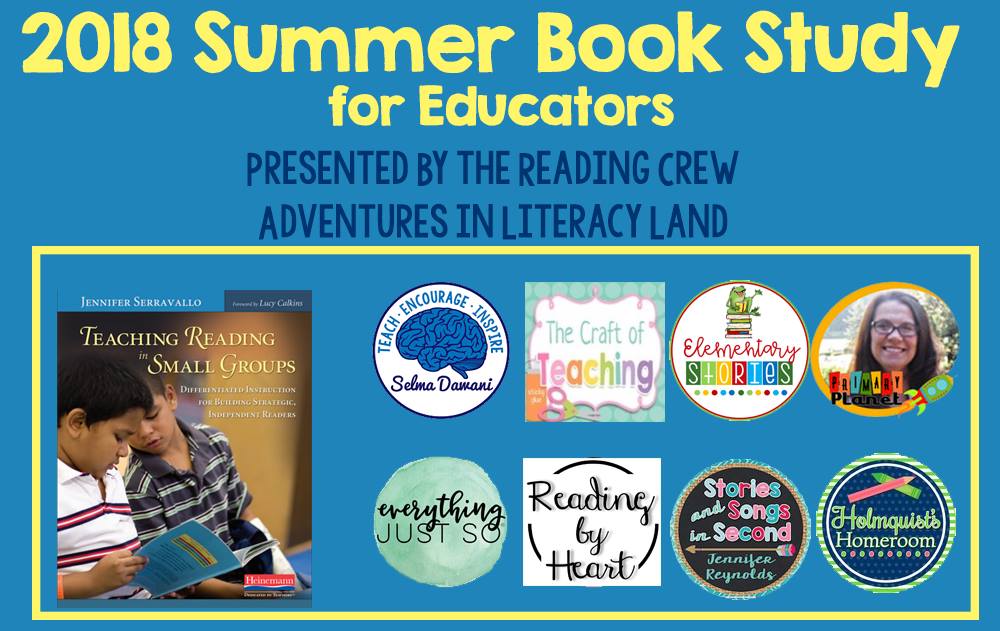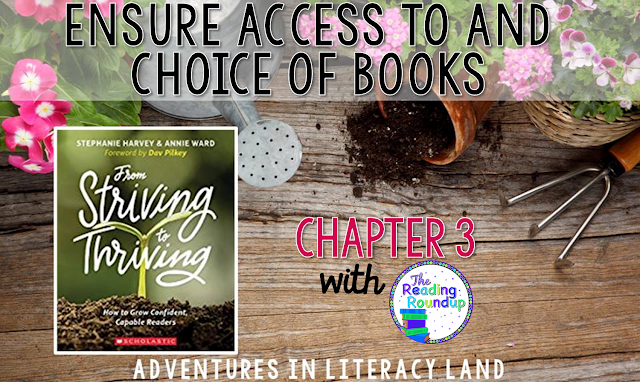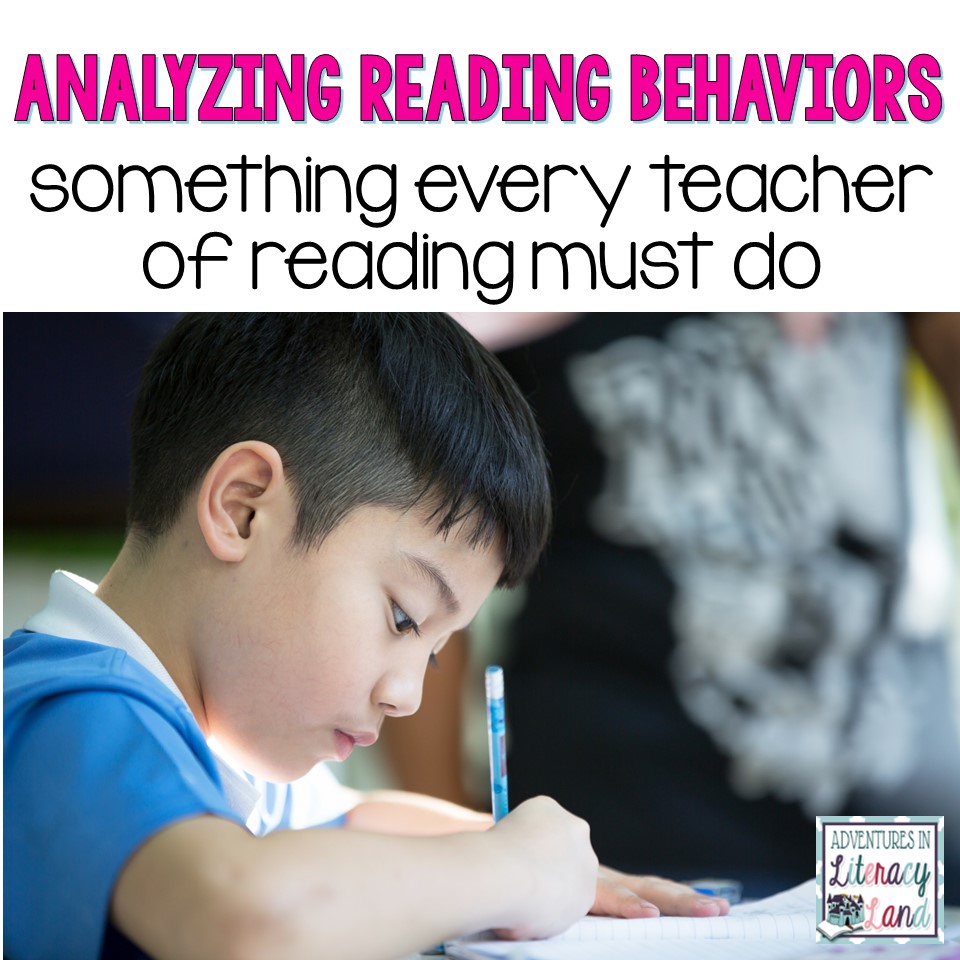Literacy instruction can take on many different forms. Some of these may be rooted in sound practices and some...well...not so much. As educators, we know that all students deserve teachers that are working to use best practice. We also know (with the help of these authors) that striving readers deserve more than mandated, unsound programs and a lack of high interest books. But how do we support change in our classrooms, schools, or districts?
Advocate.
By definition, advocate means to publicly recommend or support a cause. This can be very scary if you feel isolated or lonely. Stephanie and Annie recommend that we be literacy upstanders, that we collect, analyze, and share data, and that we keep going and growing. Let's dive just a bit deeper into each of these suggestions.

Teaching Reading in Small Groups: Moving Readers to the Next Level
I leveled up!
This is a phrase that my pre-teen son used to exclaim with glee when he had successfully completed a level in his favorite video game.
I am stuck, Mom! Can you come help me!
This was also a phrase my pre-teen son used to utter with impatience when he just could not get past a difficult stage of his game.
This is a phrase that my pre-teen son used to exclaim with glee when he had successfully completed a level in his favorite video game.
I am stuck, Mom! Can you come help me!
This was also a phrase my pre-teen son used to utter with impatience when he just could not get past a difficult stage of his game.

From Striving to Thriving ch 7 - Assessments
I've found that there are usually two mindsets teachers have about reading assessments. The first is that while these assessments are necessary, they take away from instructional time and do not give any new information about the student. This is the, "I could have told you that!" thinking.
The second mindset thinks of assessments as providing guidance for instruction. Assessments should be formative, not summative, and provide information to help that helps us move out students forwards. This is the assessment mindset that most benefits our striving readers. We need all the information we can get to help them be successful and in this chapter, Stephanie Harvey and Annie Ward provide us with a different - broader way - of thinking about assessments.

TEACHING READING IN SMALL GROUPS: Reading With Fluency and Expression
- small group shared reading
- warm-up and transfer groups and
- performance clubs.
Jennifer Serravallo imagines both. She shows us how in this chapter on Fluency.

From Striving to Thriving: Chapter 6
“We want all of our kids to become confident, thinking-intensive readers who build knowledge as they go.”
This quote is a great summary of Chapter 6. The focus of Chapter 6 is built around eight action steps to building thinking skills in all students.
1) Teach comprehension strategies explicitily.
2) Teach with the Gradual Release of Responsibility framework
3) Use interactive read-alouds
4) Build fluency, comprehension, and confidence
5) Attend to signposts: text features, graphic features, and signal words and phrases
6) Teach with images, videos, graphics, and artifacts
7) Engage kids in temporary, flexible, needs-based small group instruction and small- group work.
8) Share pathways to understanding through digital reading, listening, and viewing.
For this blog post, I really want to focus on teaching comprehension explicitly and using interactive read-alouds.

Teaching Reading in Small Groups: Improving Partnerships and Clubs
If you’re just joining the summer Book Study, we’re up to Chapter Five in our book, “Teaching Reading in Small Groups.” Jennifer Serravallo’s text shares strategies for differentiating instruction through the use of small groups. In Chapter Five, Jennifer shares how small group instruction can be used to improve students’ work during reading partnerships and clubs.

From Striving to Thriving: Book Match Relentlessly!
You've seen those students in your classroom - the ones who roam around looking for the "perfect book" to read. They pick up the ones that everyone else is reading, but you know they can't read them. Then they get frustrated because they just can't seem to find a good fit book. Anger sets in because they know they can't read and do what everyone else is doing. What do you do?
Now that we have gained trust with our students, it's time to teach them how to find and enjoy reading at a whole new level! Though this chapter seemed like a "no-brainer" for me, I realized I had been book matching all wrong. Find out the BEST ways to get the right books in your students' hands!
Now that we have gained trust with our students, it's time to teach them how to find and enjoy reading at a whole new level! Though this chapter seemed like a "no-brainer" for me, I realized I had been book matching all wrong. Find out the BEST ways to get the right books in your students' hands!

Teaching Reading in Small Groups Ch.4 Strategy Lessons
The official title of Chapter 4 is Guided Practice Toward Independence: Strategy Lessons for Comprehension, Print Work, and Fluency.
To start this chapter Jennifer Serravallo talks about learning to be a clown for a high school production. She chooses to be a plate spinning clown, which is a perfect way of thinking about teaching children in strategy groups (or really teaching in general if you think about it!) You have to get one plate spinning on its own before you can move on to the next. Then, you have to go back periodically and give the plate a bit of a spin to keep it moving independently. You teach (spinning originally), Assess (go to check to see if it is still spinning) and then reinforce (give that plate another little spin to keep it going). Hence, Strategy Lessons. These are the With (or coaching) part of teaching students independence. You've got to keep them spinning if you want them to stay up!

FROM STRIVING TO THRIVING: CHAPTER 4 "PUMP UP THE READING VOLUME"
"The best intervention is a good book."
READING MAKES READERS
Volume reading is crucial to transforming striving readers into thriving readers, say Stephanie Harvey and Annie Ward. They believe that voluminous, pleasurable reading is the key to literacy development. In this post we'll look at Chapter Four, "Pump Up the Reading Volume." The authors discuss how voluminous reading changes lives, reasons to add more reading to our day, how to build in more reading time, and review the research.

Teaching Reading in Small Groups - ch. 3 Engagement
As teachers, we are very vocal about our love for reading. We are constantly sharing new books with our students, reading aloud, and loving the excitement that reading brings. Outside of school, we read for enjoyment and to grow professionally. We talk with others about what we are reading.

From Striving to Thriving: Ensuring Access to and Choice of Books
Raise your hand if you have ever had a student say to you, "I hate reading." Most likely, every single one of us has had this heartbreaking experience with a student. But according to James Patterson in the following quote and the authors in Chapter Three, these students have just not yet found the right books. It is our responsibility as educators to provide all of our students with access to and choice of books, which is the focus of this chapter.

Teaching Reading In Small Groups - Chapter 2: "Forming Groups: Making the Invisible Visible Through Assessment"
When I signed up for this summer book study, I immediately gravitated towards chapter 2! I have always struggled with small group reading instruction (hence, the book study participation) and one of my biggest struggles is HOW to get the kids into groups that make sense AND allow for the greatest amount of growth in all students. It seems like my reading groups tend to stay static for a loooong time and then abruptly change. Jennifer Serravallo has laid out some great ideas for how to create the best groups for your students and keep them flexible as their needs change.

FROM STRIVING TO THRIVING: CULTIVATE CURIOSITY
Curiosity matters.
This simple statement by Harvey and Ward is the focus of Chapter 2 in From Striving to Thriving. The authors believe that questioning is the strategy that moves learners forward, especially striving readers, and that it is our job as teachers to convince them that we value their inquiries.
This simple statement by Harvey and Ward is the focus of Chapter 2 in From Striving to Thriving. The authors believe that questioning is the strategy that moves learners forward, especially striving readers, and that it is our job as teachers to convince them that we value their inquiries.

Analyzing Reading Behaviors: A MUST for Every Teacher of Reading
How can you tell a student is reading a text that is too hard? What signs do children give that they've met their limit? To learn the "look fors", head over to Comprehension Connection where you'll find this blog post. (it has been relocated to Carla's blog).

Chapter 1 -- 2018 Summer Book Study: Teaching Reading in Small Groups by Jennifer Serravallo
This year The Reading Crew chose Teaching Reading in Small
Groups: Differentiated Instruction for Building Strategic, Independent Readers
by Jennifer Serravallo as one of our professional development book studies for the
summer of 2018.
Posted by
Unknown

From Striving to Thriving: Table the Labels
Not all intervention programs are equal! There! We said it! In the opening of chapter one, Harvey and Ward describe a beautiful classroom scenario where Anthony makes the connection that "Reading is thinking!" In that classroom, there are great things happening. Students are turning and talking, jotting thoughts, questions, and new learning on sticky notes, getting to know each other as readers, conferring with their teachers, and reading books that they are totally engaged in. Anthony's realization that reading is thinking goes beyond calling out the words and shows he's connected the importance of comprehension.
In this post, we'll look at intervention programs and ideas to help make the most of classroom reading instruction.
Subscribe to:
Posts (Atom)



















